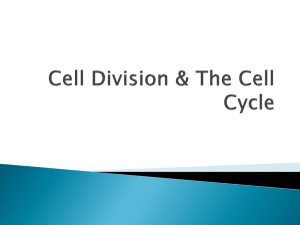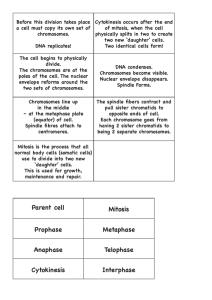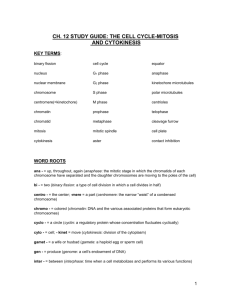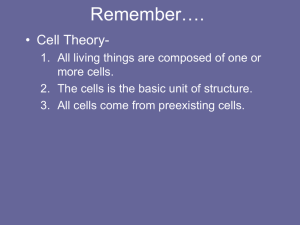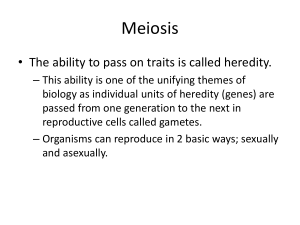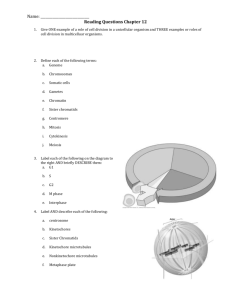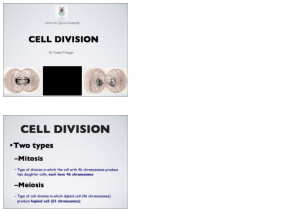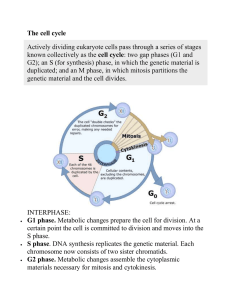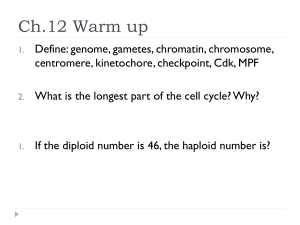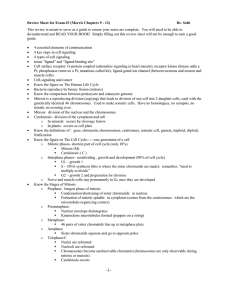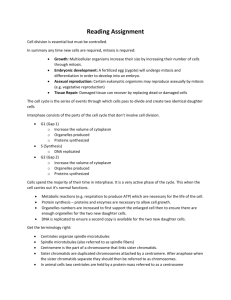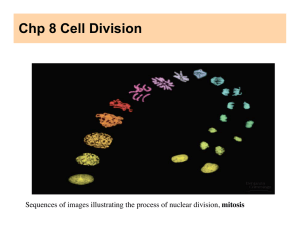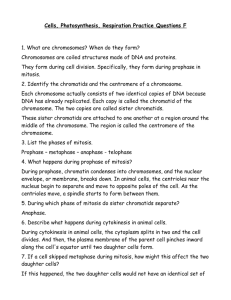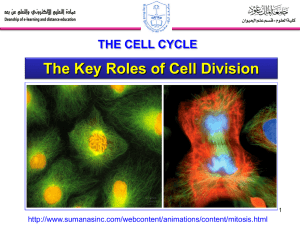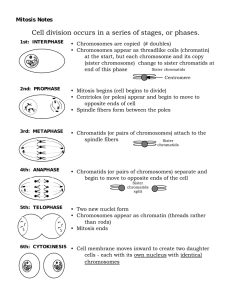Virtual Lab: Mitosis Phases
advertisement
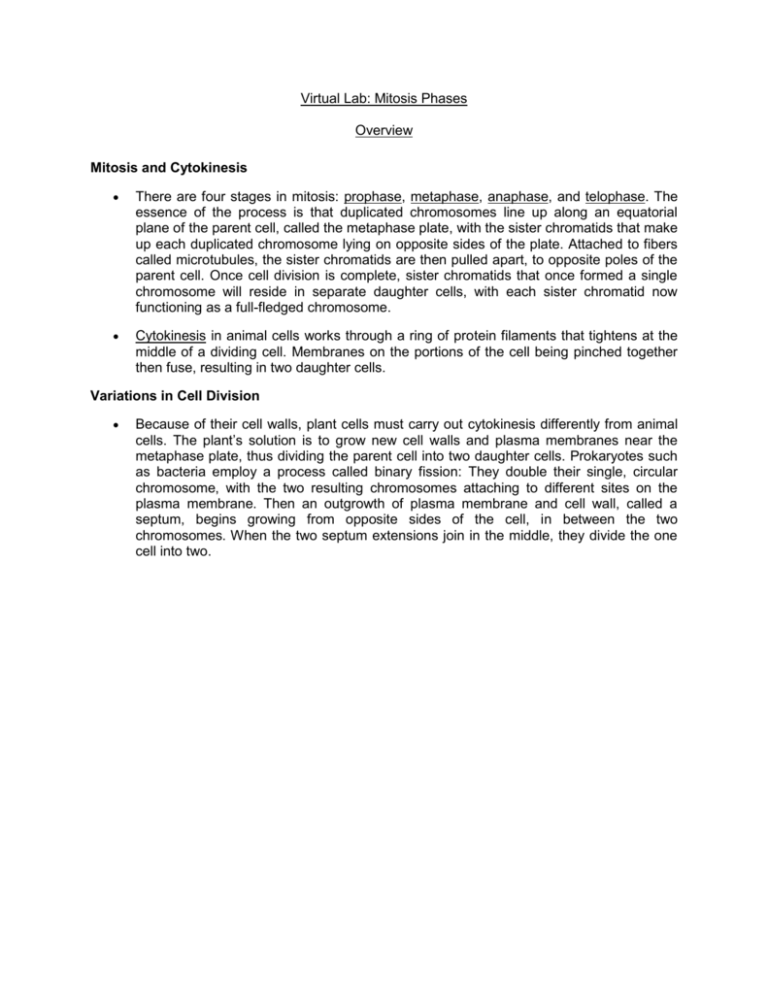
Virtual Lab: Mitosis Phases Overview Mitosis and Cytokinesis There are four stages in mitosis: prophase, metaphase, anaphase, and telophase. The essence of the process is that duplicated chromosomes line up along an equatorial plane of the parent cell, called the metaphase plate, with the sister chromatids that make up each duplicated chromosome lying on opposite sides of the plate. Attached to fibers called microtubules, the sister chromatids are then pulled apart, to opposite poles of the parent cell. Once cell division is complete, sister chromatids that once formed a single chromosome will reside in separate daughter cells, with each sister chromatid now functioning as a full-fledged chromosome. Cytokinesis in animal cells works through a ring of protein filaments that tightens at the middle of a dividing cell. Membranes on the portions of the cell being pinched together then fuse, resulting in two daughter cells. Variations in Cell Division Because of their cell walls, plant cells must carry out cytokinesis differently from animal cells. The plant’s solution is to grow new cell walls and plasma membranes near the metaphase plate, thus dividing the parent cell into two daughter cells. Prokaryotes such as bacteria employ a process called binary fission: They double their single, circular chromosome, with the two resulting chromosomes attaching to different sites on the plasma membrane. Then an outgrowth of plasma membrane and cell wall, called a septum, begins growing from opposite sides of the cell, in between the two chromosomes. When the two septum extensions join in the middle, they divide the one cell into two.
